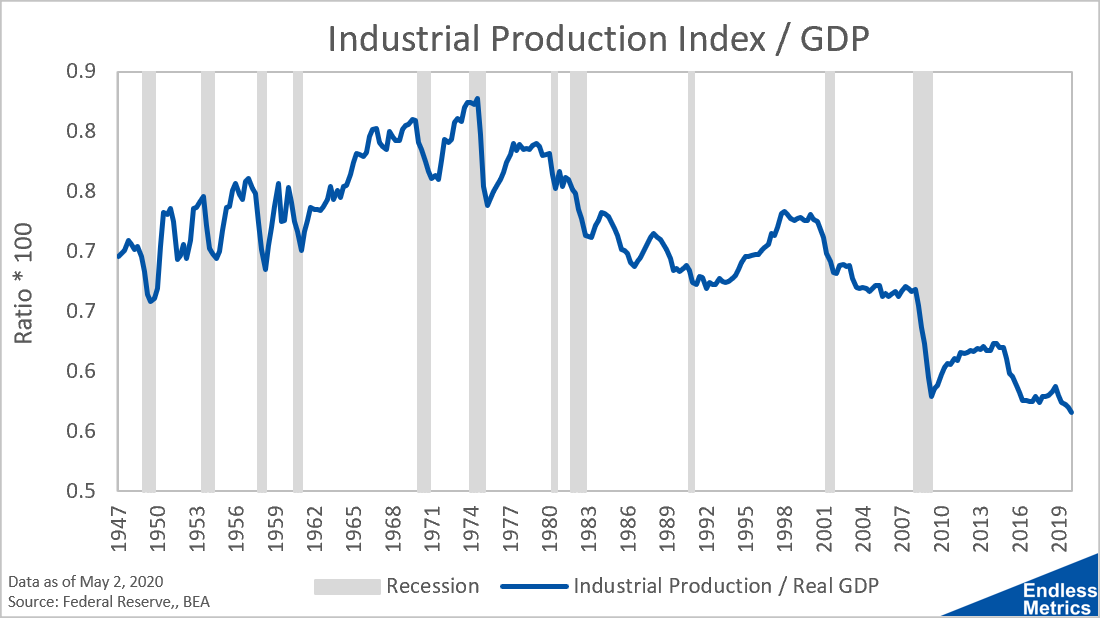Industrial production covers the real output of industries like manufacturing, mining, and energy utilities. And, over the last hundred years, has generally increased.
However, in the past few decades, this physical component of our economy has fallen behind the rest of the service-based economy of the US. This is sometimes referred to with bleak phrases like the “death of manufacturing.”
Since industrial production has grown even during a challenging era for the industry, it makes sense to benchmark the index to get a better view of the “dying” industrialization phenomenon. This is what it looks like when divided by another real measurement of the economy, overall real gross domestic product:

In this chart, it’s obvious that manufacturing (and related industries) peaked in the mid 1970s. After that, although industrial production continued to grow, the pace was far exceeded by the non-manufacturing segment of the overall economy. That’s why the ratio has trended downwards ever since.
Another notable behavior of this ratio is that it tends to fall drastically during recessions. This can be interpreted as manufacturing getting hit harder during downturns relative to the rest of the economy. So, not only are recessions terrible but they are even more terrible for individuals in industrial-based jobs.
While it’s too extreme to say that we don’t build anything anymore, it is fair to say that we don’t build as much as we could to keep pace with our economy. This weakness has become more acute during the coronavirus outbreak, when lack of physical medical equipment and inability to surge produce it to meet demand has lead to shortages and price gouging.
Hopefully this is a wake up call to the country that strategic investment into industrial production will make the US more resilient. In a world that seems to be heading toward a globalization recession, this need will only become more critical as times goes on.


